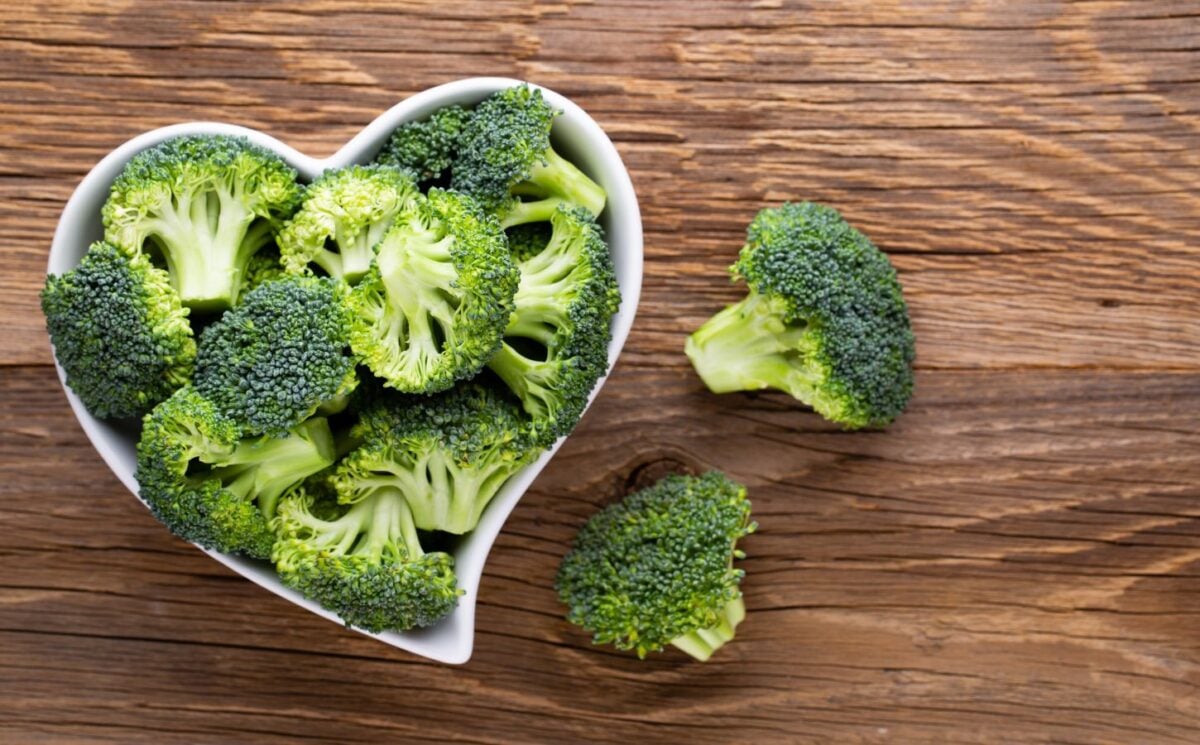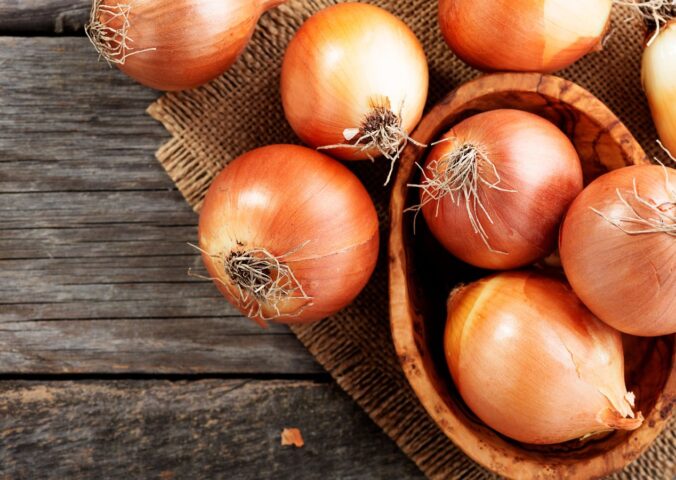Everybody knows that eating vegetables is good for their health. Packed with vitamins, minerals, fiber, and antioxidants, vegetables play a crucial role in supporting various bodily functions. Eating a variety of vegetables provides your body with essential nutrients. Beyond their health benefits, vegetables add vibrant colors, flavors, and textures to meals, making them a versatile and enjoyable part of a balanced diet. But which vegetables are high in protein? And can eating high-protein vegetables provide all your protein needs? This guide will reveal some of the highest protein veggies and how you can make sure you are getting maximum protein value when cooking vegetables.
What are the health benefits of vegetables?
Vegetables contain a wide array of nutrients from vitamin C and vitamin A to potassium, iron, and folate. Each of these contributes to immune function, bone health, and disease prevention.
Regular consumption of vegetables has been linked to a reduced risk of chronic diseases such as heart disease, certain cancers, and type 2 diabetes. Vegetables also play a role in heart health, blood sugar control, eye health, and hydration. The high fiber content in vegetables also promotes digestive health, supporting a healthy gut microbiome.
Vegan Society dietitian Andrea Rymer tells Plant Based News (PBN): “Eating a balanced and varied diet can look different for everyone, but it is important that your diet provides adequate calories and features meals containing starchy carbohydrates, a variety of fruit and vegetables, sources of good-quality protein and small amounts of unsaturated fats. This feeds our bodies with all the essential nutrients and vitamins and minerals it needs to function correctly.”
Do vegetables contain protein?
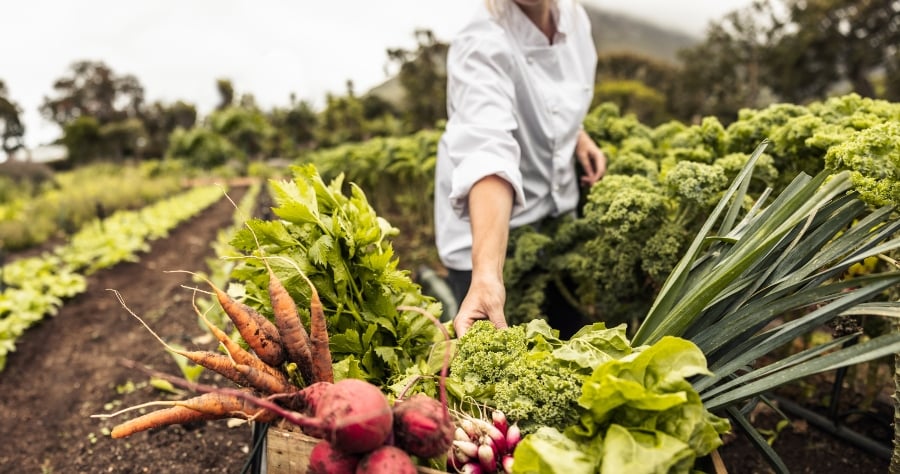
Absolutely! Amidst all these superpowers, one often-overlooked benefit of vegetables can be their protein content.
Vegetables can have a significant amount of protein, but you shouldn’t rely solely on them for your protein intake. For a healthy, balanced plant-based diet, it is important to combine vegetables with foods like grains, legumes, tofu, tempeh, seitan, nuts, and seeds, which are all great sources of plant-based protein.
Rymer comments: “It’s good to bear in mind that protein obtained from lower quality sources such as vegetables can make valuable contributions to your overall intake, however it is key to include good-quality protein in meals alongside vegetables, rather than relying solely on veg.”
She adds that “you’d need to eat almost one and a half heads of broccoli to get the same amount of protein from a portion of tofu.” But not all vegetables are equal. “Vegetables grown from pods such as peas and edamame are an exception, as they are pulses (a seed from the pod of a legume plant), which means they are higher in protein.”
What is protein?
Protein is a crucial part of a healthy diet. It helps support the structure, function, and regulation of the body’s cells, tissues, and organs. Proteins are made of long chains of amino acids. There are 20 different amino acids that can combine in various ways to form a protein, and the sequence and arrangement of these amino acids determine the protein’s specific structure and function.
“Protein is made from building blocks known as amino acids,” says Rymer. “Some of these our bodies do not make on their own and we therefore need to get from food. These are known as essential amino acids, and good quality proteins include some essential amino acids that our bodies need, including beans, lentils, peas, soya, peanuts, quinoa, cashew nuts, chia seeds, ground linseed, hemp seeds and pumpkin seeds.”
Rymer adds: “It isn’t necessary to obtain all of the essential amino acids in one sitting, and the key thing is to include sources of good quality protein throughout the day.”
Although meat industry propaganda often focuses on the fact meat contains all nine essential amino acids, vegans can obtain these amino acids through a well-planned and diverse plant-based diet. There are many complete plant-based sources of protein (such as tofu, tempeh, and edamame), and eating a range of foods can help you get all your amino acids without meat.

Why is protein important?
Proteins serve a wide range of functions in the body. These include providing support and structure to cells and tissues, regulating the immune system, and moving substances around the body.
Adequate protein intake is crucial for overall health, growth, and maintenance of bodily functions. Failing to consume enough protein can lead to muscle loss, fatigue, a weaker immune system, hormonal imbalances, and impaired growth.
How much protein do I need?
The recommended daily protein intake varies based on factors such as age, sex, weight, physical activity, and overall health goals.
As a rule of thumb, dietary guidelines often advise between 0.7 and 0.8 grams of protein per kilogram of body weight. For a woman weighing 55 kg, this would mean around 40 grams of protein.
For reference, half a cup of firm tofu typically offers around 20 grams of protein. This hefty protein hit comes with only 181 calories and 11 grams of fat, most of which is of the healthy polyunsaturated kind.
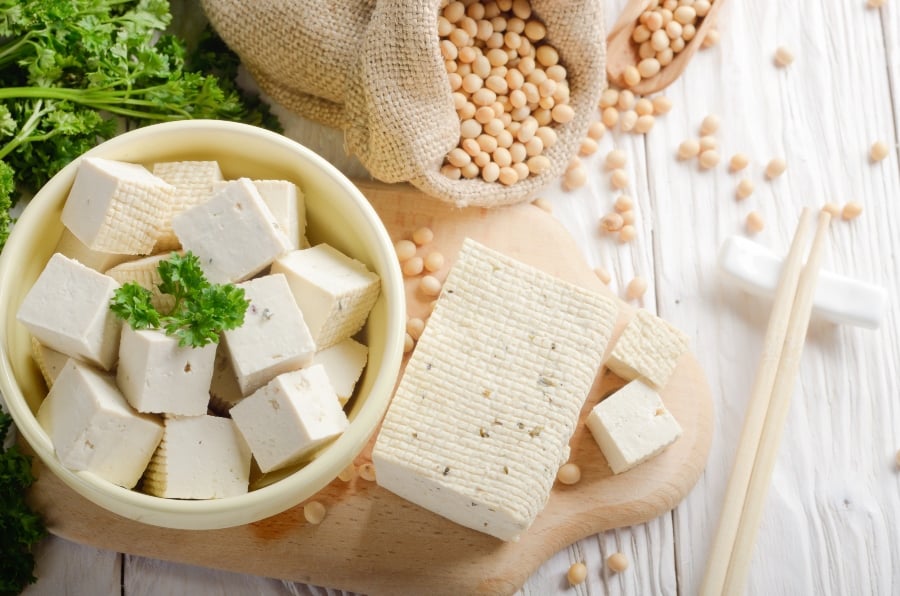
Individuals’ approach to protein will vary, Rymer notes: “For someone with higher protein needs, such as athletes or older adults, tofu, tempeh, vegan mycoprotein, soya mince and seitan can provide protein in a smaller package. Dense protein options can also be helpful for someone with a smaller appetite, as well as including nourishing drinks using dairy alternative milks based on split peas or soya,” she added.
Data from the UN Food and Agriculture Organization have shown that the average person in the US and Canada is consuming 90 grams of protein a day. This is a fifth more than the recommended amount, based on a normal North American adult weight of about 80 kg.
Do I need meat to get protein?
No. There are abundant plant-based foods that are high in protein. See here for 25 High Protein Vegan Recipes.
Which vegetables have a lot of protein?
Vegetables may not be most people’s first thought when it comes to getting protein. But some veggies do contain protein.
Below are eight protein-rich vegetables that can be enjoyed as part of a balanced diet to boost your protein intake.
Broccoli
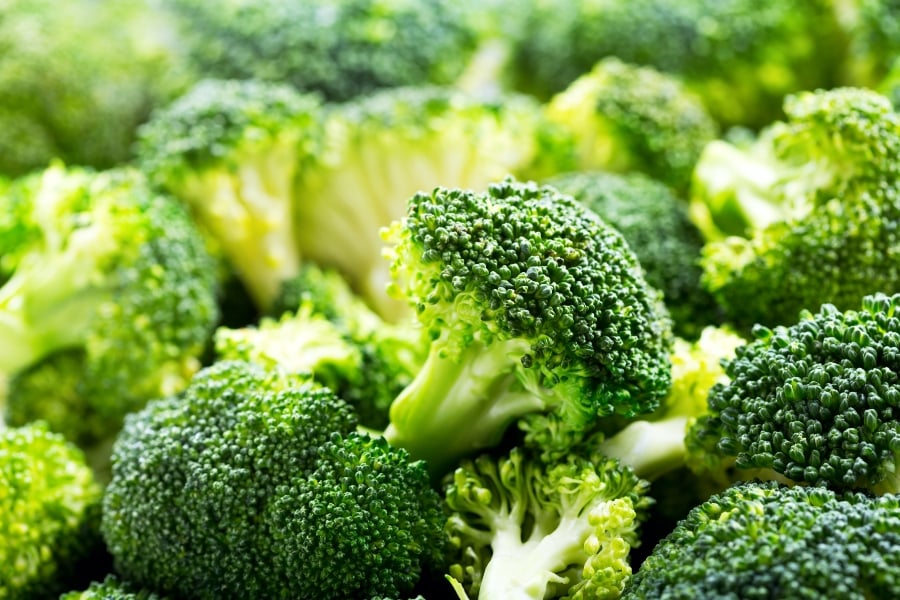
We all know broccoli is not only rich in vitamins and minerals, but its protein contribution can sometimes be overlooked. Enjoy it steamed, roasted, or added to stir-fries. Combine with lentils in this recipe for an extra protein hit. To maximize protein intake, don’t forget to use the whole vegetable: a medium broccoli stalk contains 4.3 grams of protein.
Edamame
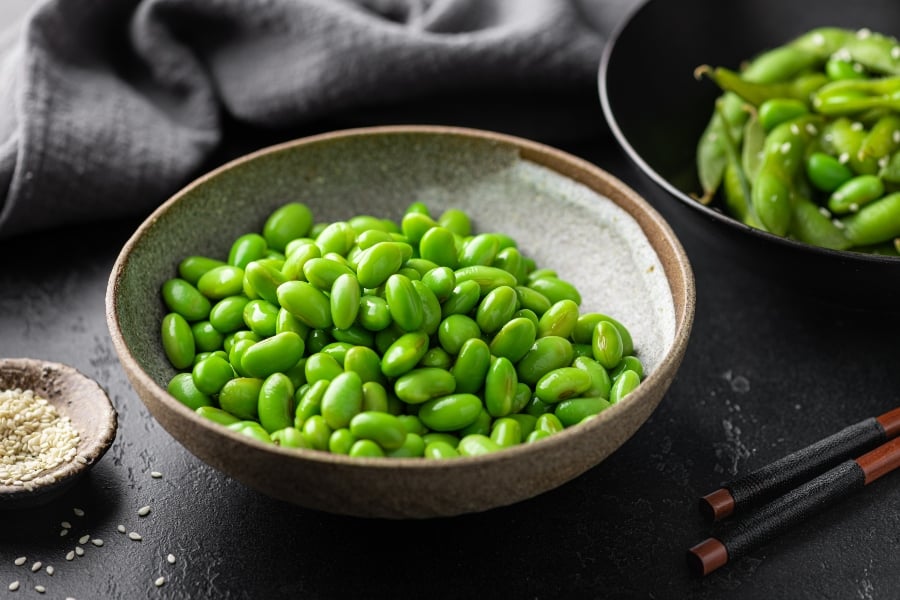
A protein-rich legume, edamame are young soybeans. Like soy-based products such as tofu and tempeh, they don’t mess about. Indeed, a single cup of cooked edamame can provide a massive 18 grams of protein – not bad for a delicious snack. Try adding edamame to salads or stir fries. Edamame are also a good source of calcium, magnesium, and vitamin K.
Peas
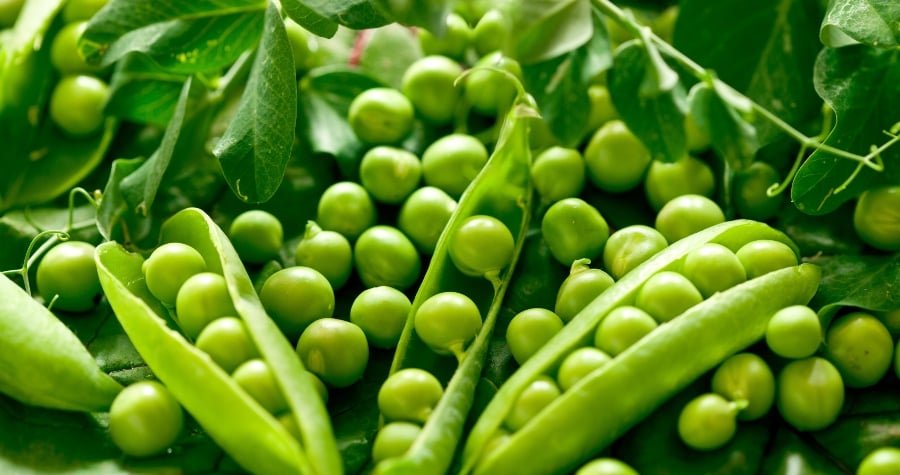
Whether fresh or frozen, peas are a great source of protein. Easy to add to salads, soups, or stir-fries, peas pack a healthy kick into their small size. The little green balls have high amounts of fiber, iron, and potassium. And just half a cup can provide up to five grams of protein.
Spinach
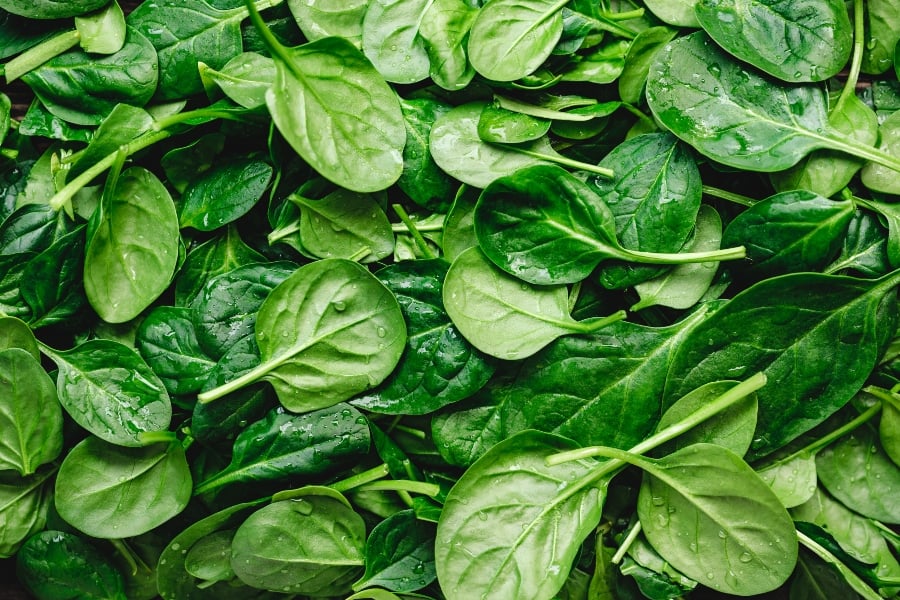
Spinach is a nutrient-dense leafy green that contains a decent amount of protein. Combined with other protein sources, spinach adds a great boost. Toss it into salads, smoothies, or sauté it as a side dish. Only 100 grams of raw spinach can contain about three grams of protein.
Artichokes
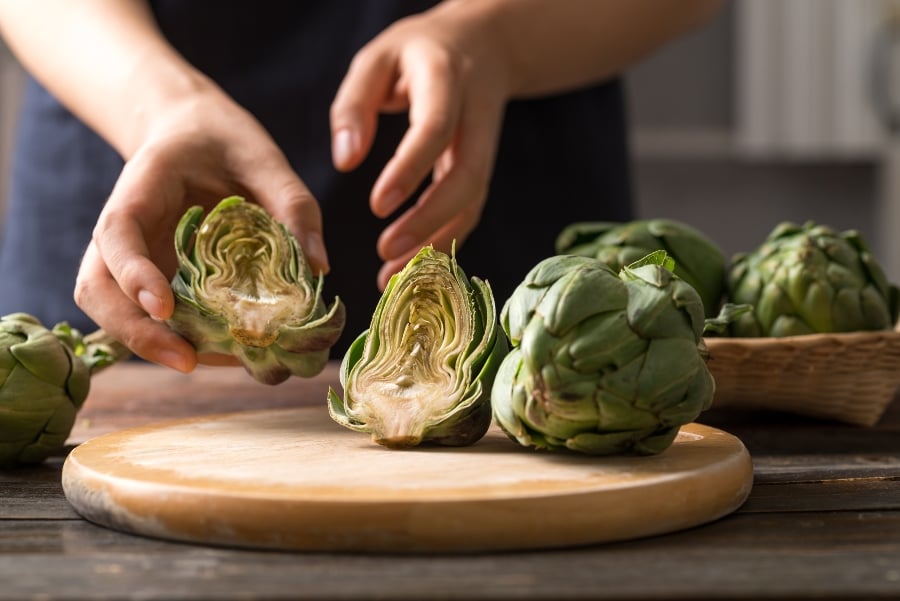
Artichokes are not only a good source of fiber but also contain some protein. They can be included in salads, dips, or enjoyed on their own. Use them instead of tuna in this innovative recipe. A medium-sized cooked artichoke has around 3.3 grams of protein.
Brussels Sprouts
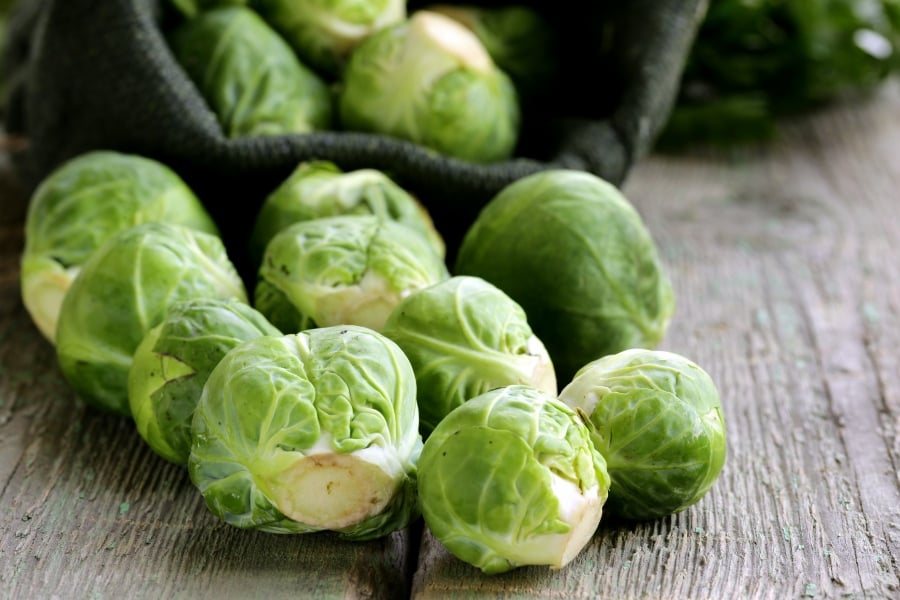
Brussels sprouts are a cruciferous vegetable packed with nutrients. Half a cup provides two grams of protein, while being nutritionally dense and calorie light. Roast or sauté them for a delicious side dish, or make a lasagna.
Kale
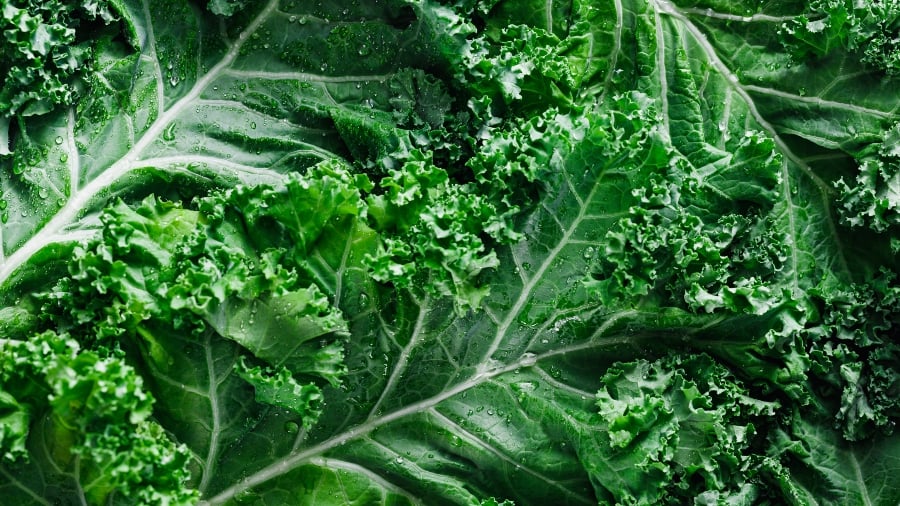
Kale is another versatile leafy green that provides a decent amount of protein. More than two grams in a single cup, in fact. Full of nutrients, kale is a great addition to stews, and makes delicious healthy crisps.
Asparagus

Asparagus is a low-calorie vegetable with more than two grams of protein per half a cup. Packed with vitamins A, K, and C, asparagus is a great vegetable to include as part of a balanced diet. Enjoy it grilled, roasted, or steamed. Try this asparagus frittata.
Does how I cook my vegetables affect the protein value?
Remember that the amount of protein you get from vegetables might be different depending on how you cook them.
Boiling vegetables can result in nutrient loss. When vegetables are boiled, some of the water-soluble nutrients, including a small amount of proteins, may leach into the cooking water. For stews, it’s often recommended to use the cooking water to retain these nutrients.
Likewise, roasting or grilling vegetables at high temperatures can lead to some nutrient loss due to heat sensitivity.
More generally, cooking can alter the structure of proteins. This doesn’t necessarily change your protein intake but it may affect how much protein your body can digest and how the body absorbs and utilizes the amino acids.
This doesn’t only work in the negative, though. Cooking can make certain nutrients, including proteins, more available by breaking down cell walls and making them easier for the body to absorb. For example, lightly cooking spinach can increase the availability of certain nutrients, including proteins.
